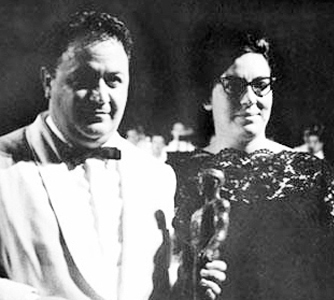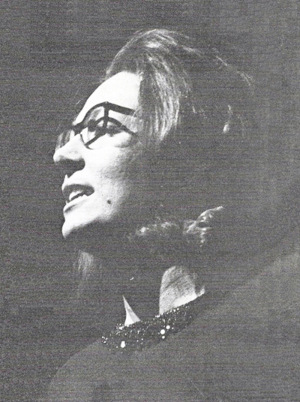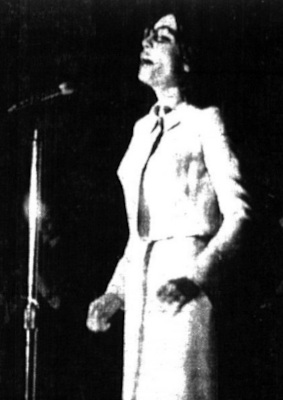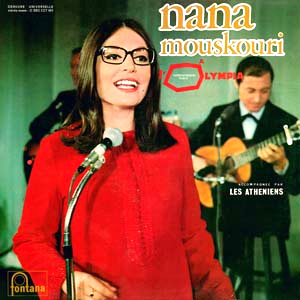Recently, a friend pointed out that I often write about the 1960's. By re-reading my articles in the section "Memories", I realized that he was absolutely right. Why? Probably because it's a decade of which I was not completely familiar; and even more importantly it was a life-changing and super prolific period for Nana's career. After she became nationally famous in Greece and internationally throughout Europe, her success reached America and the other continents. So, why not write another article for two very special periods of this fabulous decade? Those of 1962-1963 and 1966-1967. Each one took place on stage. One in Paris and the other in Quebec.
RECALLING THE EARLY YEARS Nana's meeting with the composer Manos Hadjidakis in 1958 essentially marked the beginning of her performance and recording careers. After winning the first prize at the Greek Song Festival in Athens in 1959 and 1960, Nana achieved the same success at the Mediterranean Song Festival in Barcelona. The following year, in Paris, she recorded her first French songs. And in Berlin, the documentary film "Traumland der Sehnsucht" (Greece, Dreamland of Desire), in which she sang five songs, won a Silver Bear. Thanks to her first recording in German, "Weisse Rosen aus Athen", she became a million-seller in the record industry. |
|
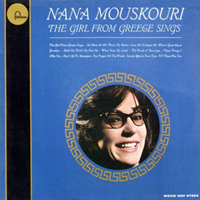 |
1962-1963 At the end of the summer of 1962, Nana gave the finishing touches to "The Girl from Greece sings", an album of American standards recorded in New York City under the supervision of the producer Quincy Jones. In the United States she was just beginning and in Europe, many projects were already planned. So, the decision was made to relocate to Paris, where her production team was located. Then, in October, she left for Germany to present the tour "Treffpunkt der Goldenen" with the singers Gerhard Wendland and Heidi Brühl. |

In December 1962, for three weeks, Nana performed as the opening act in the first part of singer Georges Brassens' concert at the Olympia in Paris. It should be noted that at that time, she was not yet well known in France. She had only appeared a few times on television and the press had just begun to write about her. However, her songs were being played on the radio. On RTL, her German and French songs were part of the station’s programming.
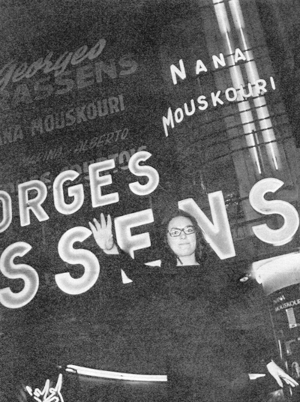 |
|
In early 1963, Nana made her first trips to London to make several recordings at the Marble Arch studio. In March, she represented Luxembourg at the Eurovision Song contest with "À force de prier", a composition of Raymond Bernard and Pierre Delanoë. She did not win the contest, but her performance allowed a widely international audience of television viewers to put a face to her name. Meanwhile, dutifully Nana continued to diet. In the spring, she reached her desired weight and got a bob haircut. |
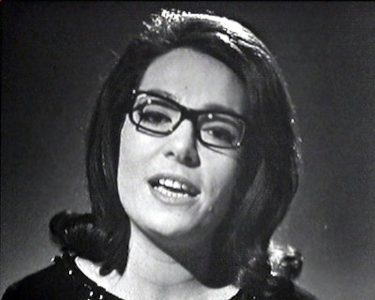 |
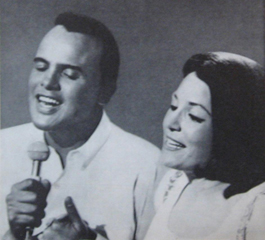 |
RECALLING THE THREE YEAR TOURS Following her appearance at the Eurovision Song Contest, her success was growing in several countries of Western Europe. After France, Germany and England, Nana occasionally traveled to Holland, Italy and Spain to present some of her songs in those national languages. From 1964 to 1966, she toured Canada and the United States four times with the singer Harry Belafonte. The on stage touring experience touched and energized her so much that she decided going forward to concentrate most of her time on the road, singing in front of live audiences. |
1966-1967
After an absence of several months, the European viewers watched her on the small screen in December 1966. Nana's hair was parted in the middle and falling on her shoulders. Her rectangular and thinner frames are those with which she's now associated and they will become her stage glasses. The last published photos dated back to June, during the recording of the Dutch TV show "Caterina Valente Show". At that point, she had changed her hairstyle, but her hair was shorter.

Also in 1966, in the fall, Harry Belafonte's Canadian impresario, Samuel Gesser, became her agent. Due to her growing popularity in Quebec, he decided to organize a tour across the province. In his opinion, with her ten French hits and her Greek songs, she had the necessary repertoire to present a complete two-part song recital.
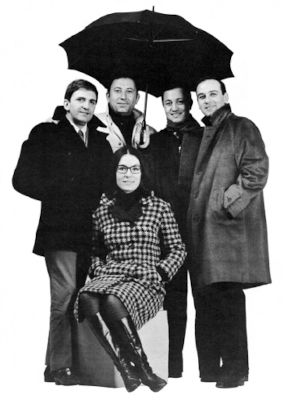 |
|
Upon her return to France, Nana realized that her career had progressed. She was then considered as a French singer. First, her album "Le coeur trop tendre" earned the Grand Prix de l'Académie Charles Cros. Then, "C'est bon la vie" and "Adieu Angelina", two American adaptations became hits. Nana, who performed more and more on stage, gradually abandoned the dark dresses. During the French summer tour, she was often dressed in white. And in October, during her first concert as top of the bill artist at the Olympia, in red. |
|
TOUCHING AND UNIQUE MOMENTS
During the 1960s, the world discovered Nana and her career was growing. Of all her experiences, singing in front of an audience remains for her the most touching moment. That's why I chose to shine the spotlight on two periods that led her to do it in a unique way. Whether it was every night in a legendary venue or as part of a tour, each one represents an important step in her career. Moreover, is it a circumstance if they coincided with her image change? I wish I could have lived at that time to witness it all!
